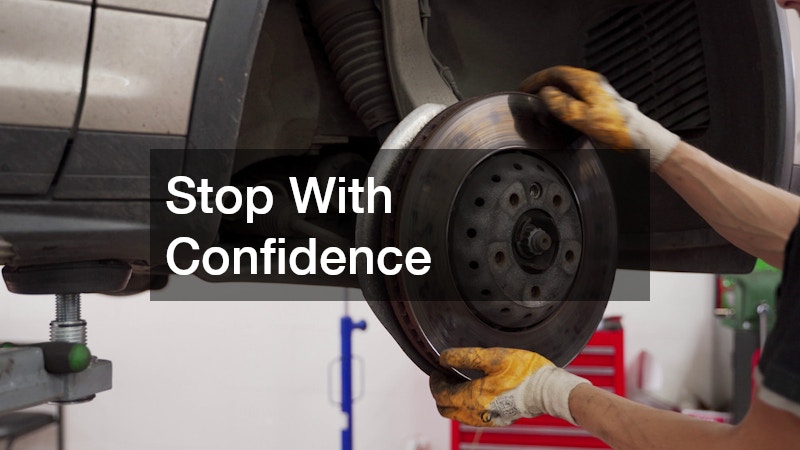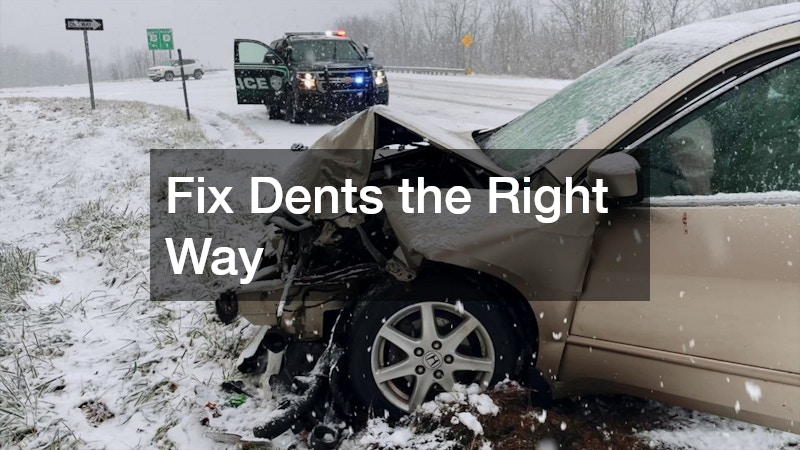Driving is a significant milestone in one’s life. As new drivers embark on this journey, it is critical to not only master basic skills but also gain knowledge on maintaining safety and vehicle efficiency. This article provides 10 essential tips for beginner drivers to navigate this new experience confidently. Those embarking on their driving journey must be aware of the nuances of traffic environments, vehicle functionalities, and the importance of being prepared for unexpected situations. With these 10 tips, beginner drivers can gain the confidence and skills necessary to become responsible and skilled drivers.
Stay Cool in Traffic
Staying calm and composed in traffic is a skill that every driver must cultivate. Traffic conditions can be unpredictable and challenging, and maintaining your cool is not only crucial for your safety but also for the safety of others. Beginner drivers should practice patience and avoid road rage, understanding that such emotions can lead to rash decisions and unsafe driving. It’s important to remember that staying cool is part of managing overall stress from driving.
One way to ensure comfort in traffic is by ensuring that your vehicle’s air conditioning is working optimally. A malfunctioning air conditioning system can make long drives uncomfortable and contribute to irritability. Regular car ac repair is essential to keep the system in top condition and can prevent a minor discomfort from becoming a major distraction. Beginner drivers should familiarize themselves with the basic maintenance needs of their vehicle’s AC system.
Additionally, many cars come equipped with features designed to help drivers manage stress in traffic, such as adaptive cruise control and lane-keeping assist. These features can take some of the burdens off a driver in heavy traffic situations. Car owners should consult the vehicle’s manual to understand how to make the best use of these technologies. By leveraging the latest automotive technologies and maintaining a comfortable environment inside the vehicle, newer drivers can significantly enhance their driving experience.
Stop With Confidence

Being able to stop safely and confidently is a fundamental driving skill. Effective use of brakes not only ensures your safety but also helps in preventing potential accidents. As newer drivers, understanding your vehicle’s braking system is key to making informed decisions on the road. Avoid sudden braking unless necessary to prevent the risk of being rear-ended by another vehicle.
Regular maintenance of the braking system at a reputable brake shop is crucial for ensuring top performance. Poorly maintained brakes can reduce stopping power and increase stopping distances, putting you at risk. Periodic checks and replacements of brake pads and fluids should be done per the vehicle manufacturer’s recommendations. If you’re not aware of reliable brake shops in your area, seek recommendations from experienced drivers.
In addition to regular maintenance, it’s beneficial for beginner drivers to practice emergency braking in a safe environment. Many driving schools offer advanced braking courses that simulate real-world situations, allowing drivers to experience how much pressure is needed without causing tire misalignment or other issues. Understanding these concepts will contribute to making a beginner driver more confident and safe when they need to stop quickly.
Know the Warning Signs
Cars are equipped with numerous warning signals designed to alert drivers of potential issues. Learning to recognize these warning signs is essential to prevent minor issues from evolving into significant problems. Newer drivers should familiarize themselves with common warning signs and what they mean to ensure a safe driving experience.
Issues such as an illuminated check engine light, unusual noises, or changes in vehicle handling can be indicators of needed auto repair. Ignoring these signs can result in costly repairs or even lead to vehicle breakdowns. It’s vital for drivers to react promptly when warning signs appear and seek professional assistance from certified mechanics. Routine maintenance and inspections can also help prevent warning signs from appearing in the first place.
Being proactive about vehicle health by understanding warning signs is a skill that needs continuous development. Beginner drivers should establish relationships with reliable auto repair shops to ensure they receive timely assistance. Educating oneself about vehicle diagnostics can also provide insight into the potential lifespan of a vehicle’s parts, thereby allowing for better planning and budgeting for necessary repairs.
Weird Noises? Listen Up

Unusual sounds emanating from your vehicle can be an indication of underlying issues that require attention. For newer drivers, deciphering these sounds can be the first line of defense in maintaining vehicle health. Identifying problems early can prevent them from becoming larger and more expensive to fix.
A common sound that can signal an issue is transmission clunking. This may indicate problems with your transmission system and needs immediate attention. Delaying repairs can lead to extensive damage and higher repair costs. Transmission issues can severely impact vehicle performance, including difficulty in shifting gears or even complete transmission failure. Beginner drivers should note these sounds and consult a professional if they suspect any issues.
Troubleshooting weird noises involves understanding what’s normal for your vehicle and noticing when things deviate from this standard. Beginner drivers can learn from more experienced drivers and mechanics about what sounds are typical for their car model. Regularly scheduled maintenance and inspections can help catch abnormalities early and maintain the vehicle’s integrity over its lifetime.
Handle Accidents Smart
Accidents, though undesirable, can happen to even the most seasoned drivers. Being prepared to handle accidents smartly is a critical skill for newer drivers. Knowing what actions to take immediately following an accident can save time, money, and even prevent legal issues down the road.
In the unfortunate event of an accident, having the contact information for a trusted auto injury lawyer can be highly beneficial. Legal representation is crucial when injuries occur, or when it’s unclear who is at fault. Having legal guidance ensures that your rights are protected and helps navigate the complexities of insurance claims. Begin building a list of contacts, including an auto injury lawyer, as part of your driving preparedness.
It’s also advisable to know what information to gather at the scene of an accident—such as photos, contact information, and accident details—to ensure a smooth process in resolving claims with auto insurers. Understanding these procedures ahead of time can alleviate stress and lead to a more effective resolution. Beginner drivers should consider participating in defensive driving courses that often include sections on accident management to better prepare themselves for these situations.
Fix Dents the Right Way

Dents and dings are common occurrences for drivers and can happen even when parked. For newer drivers, learning to address these blemishes properly is important for vehicle maintenance. Proper handling ensures that your car remains aesthetically appealing and retains its value.
If your vehicle sustains damage, considering auto body collision repair should be your first action. Attempting to fix dents without proper knowledge can worsen the damage and increase repair costs down the line. Professional collision repair centers possess the right tools and expertise to restore a vehicle’s exterior safely and effectively.
Regular inspections of your vehicle for minor dents and scratches help catch damage early. Scheduling paint touch-ups or minor repairs prevents rust and further deterioration. Beginner drivers can benefit from workshops or online tutorials to understand when professional intervention is necessary versus when DIY solutions might suffice. Learning these distinctions contributes to overall vehicle care and longevity.
Smooth Out the Ride
A smooth ride is a critical aspect of a comfortable driving experience, especially for newer drivers still mastering control. Uneven or rough rides can signal issues with a vehicle’s suspension, which should be addressed promptly to ensure safety and efficiency.
Suspension repair is of utmost importance if issues such as poor handling, excessive bouncing, or noise from the undercarriage occur. A failing suspension system can affect steering stability and increase the risk of rollover in emergency maneuvers. Beginner drivers need to consult with professionals to maintain this critical system in good working order.
Particularly for vehicles driven in regions with rough terrains or inclement weather, routinely checking and maintaining the suspension is essential. Beginner drivers should learn the signs of suspension problems by consulting their vehicle’s manual or speaking with seasoned drivers. This understanding ensures quick identification of issues and timely action to keep rides smooth and enjoyable.
Get Coverage That Fits

Auto insurance is a necessity for all drivers and provides financial protection in the event of damage or theft. For newer drivers, obtaining appropriate insurance coverage is essential and requires understanding their needs and researching their options.
Insurance policies can vary significantly, so choosing auto insurance that fits means assessing your driving habits, vehicle type, and budget. Beginner drivers should seek policies that offer the best value without compromising essential coverage options. It’s advisable to compare different insurance providers to identify the best coverage at the best price.
Some newer drivers might qualify for discounts, such as those offered to students or for completing a defensive driving course. Consulting with insurance agents can help understand any potential savings and ensure comprehensive coverage. Understanding policy details and keeping abreast of any changes in auto insurance laws is also crucial for maintaining adequate protection as driving needs evolve.
Cool Looks, Safer Ride
While aesthetics are important, auto modifications should also enhance safety. Beginner drivers eager to personalize their vehicles should prioritize functionality, ease of maintenance, and compliance with regulations.
One popular modification is auto tinting services, which not only improve a vehicle’s appearance but also offer added benefits. High-quality window tints can reduce glare and UV exposure, thus enhancing driving comfort and safety. It’s essential for newer drivers to choose tints that comply with local laws to avoid legal issues.
For those interested in vehicle customization, consulting with specialists in auto tinting services ensures a balance between aesthetics and practicality. It’s important to understand that while modifications can increase a vehicle’s appeal and comfort, they should not compromise safety or functionality. Beginners should consider these factors to enhance both the look and efficiency of their vehicles responsibly.
Drive Straight Always
A well-aligned vehicle is crucial for maintaining safety and maximizing tire lifespan. Beginner drivers must understand the importance of regular alignments, especially after hitting potholes or curbs, to ensure their vehicle operates correctly and efficiently.
Misalignments can lead to uneven tire wear, pulling to one side, or even reduced steering control. Regular checks and corrective alignments should be part of the vehicle’s routine maintenance plan. By keeping the wheels properly aligned, vehicles become safer and more fuel-efficient, saving newer drivers potential costs down the line.
The process of maintaining a vehicle’s alignment involves consulting certified professionals who can make the necessary adjustments. Beginner drivers should also learn how to identify symptoms of misalignment through research or training sessions, equipping them to seek timely corrections and enjoy a smoother driving experience.
Becoming a proficient and safe driver is a journey that requires continuous learning and application of knowledge. These 10 tips provide a foundation for newer drivers to build upon as they adapt to their roles behind the wheel. From mastering the basics of safe driving practices to understanding vehicle maintenance, these guidelines cover essential areas every new driver should focus on. As you navigate this journey, remember that patience, perpetual learning, and responsiveness to your vehicle’s needs are key.
Ensure your comfort and safety by keeping the vehicle’s interior pleasant through regular car ac repair, and maintain confidence in stopping with routine visits to a brake shop. Pay attention to your car’s needs, address auto repairs promptly, and handle unexpected situations like accidents with preparedness, possibly involving an auto injury lawyer. Furthermore, keep your ride smooth with timely suspension repair and protect your vehicle with appropriate auto insurance.
Discover the balance between form and function with modifications like auto tinting services and keep your vehicle driving straight with regular alignments. As you gain experience, these practices will become second nature, helping you become not just a driver, but a guardian of your vehicle and well-being. Whether you’re fixing dents or identifying weird noises like transmission clunking, embrace these learning moments. Remember, driving is not merely a skill, but a responsibility; equip yourself with the knowledge to drive safely and smartly to ensure a rewarding driving life.


